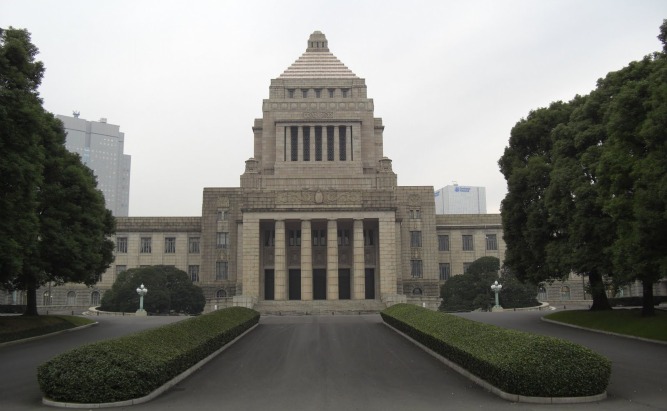No, it has nothing to do with calorie control or losing weight, not even in the current global financial straitjacket – but has everything in common with the U.S. Congress and British Parliament, both of which have been adapted, to some degree, into the system of government here.
We’re talking about the Diet of Japan (locally known as Kokkai 国会), which like its British, American and Australian equivalents includes two legislature: the House of Representatives and the House of Councilors.
They meet in the National Diet Building (Kokkai-gijidō 国会議事堂) in Chiyoda-ku, fairly close to the Imperial Palace and right next to Nagatacho and Kokkai-gijidō-mae stations on the Tokyo Metro.
As of August 31, 2009, the place has been rather shaky thanks to the electoral overthrow of the Liberal Democratic Party – which had ruled virtually continuously since its inception in 1955.
The “new” government (formed by the similarly named Democratic Party of Japan) is a thing most Japanese are still trying to get accustomed to as they’ve already churned through two prime ministers – Yukio Hatoyama, and the current incumbent Naoto Kan.
But the rocky political road has been pretty much continuous since Junichiro Koizumi served five years in office up to September 2006; since then there’ve been five PMs.
Perhaps it all has to do with the hidden side of the diet building – the fact that this is also the place that Princess Hinoto lives beneath in the CLAMP manga classic, X – which was made into an anime movie by director Rintaro in 1996 and later ran as a Madhouse TV title thanks to Yoshiaki Kawajiri (Ninja Scroll).
There’s more to the National Diet Building, however, than its laid-to-waste fate in a couple of Godzilla movies and in the 2006 disaster flick Japan Sinks.
The structure itself has a far-flung history and international input that began with initial designs by German architects in the 1880s, right up to its completion as a finished structure in 1936 – to a plan by public competition winner, Watanabe Fukuzo, some input from fellow winner Takeuchi Shinshichi, and a nod in the direction of the original Germanic concepts.
It’s a majestic building, with the lofty architectural ideals supported by stained glass, flowing drapes, and marble throughout.
Suiting the reputed punctuality of both Germany and Japan, who shared a hand in the design, there’s a tour of the building every 60 minutes – right on the dot.




Comments
well, Thanks for publishing!